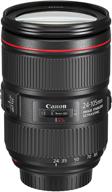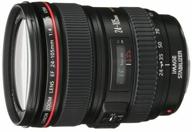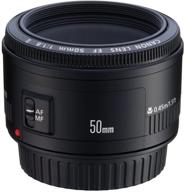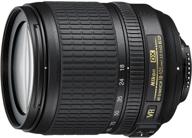
Review on 📷 Olympus Zuiko 50-200mm f/2.8-3.5 Digital ED SWD Lens for Olympus DSLR Cameras by Kevin Carr

Sharp and fast
I've wanted this lens since I was looking for a DSLR. After I bought my Olympus E-620 it was second on my list of lenses to buy (first was the 14-54mm II because I need a universal zoom). I bought this lens on sale but immediately after ordering it I had a bad feeling. I can't afford this lens! Bought 14-54mm II instead of 12-60mm for budget reasons. I also bought a 50mm macro so I was on a very tight budget. I was determined to bring this lens back and go with the 70-300mm instead to fill telephoto needs, but the quality of this lens made me change my mind. So I sold a 50mm macro lens to finance this lens. Here's the tantalizing fact why he made me forget about the budget. (and I'm usually financially prudent).1. Very sharp. While the 50mm macro lens is definitely brighter at F2 and is known to be one of the sharpest lenses (of any brand), I find this lens to be sharper than the 50mm at this focal length. Looking at the MTF chart, 50mm definitely wins, but in a real situation you have to look very carefully.2. Very fast. SWD is quiet and fast. I don't think I'm an action shooter (I usually shoot landscapes) but I could use it to take a lot of bird shots with excellent accuracy. I mean, they flew in the middle of the sky and i got them anyway.3. Bright enough. Typically, telephoto lenses in this price range start at F4, not F2.8. F2. 8 is a very flexible aperture that allows you to do many handheld photoshoots without the help of a bulky tripod. Beautiful colors. Although my 14-54mm II can take 50mm, for some reason this lens is better. The color becomes a little richer. Maybe a big hood changes the lighting, I don't know the real reason, but the difference is noticeable. The 14-54mm II and 50mm tend to capture images that look "digital". On the other hand, 50-200mm allows for more cinematic shots. Just look at user photos (taken by others) and it's very similar to what I get from it. There's a kind of film, but it's not grainy! Things to consider: 1. It's hard. When carrying, hold the lens, not the camera body. Mounting on a smaller camera body like the E-620 will definitely weigh down the front end. My guess is that the tripod itself is about as heavy as the E-620's body alone. You can take it off when you don't need it. You will get a lot of movement when you carry this lens with you. However, it feels secure in hand.2. It's huge. This is one of the smallest lenses in its class, but it's still very chunky. At full reduction that's good, quite a long time. The hood is HUGE. The whole lens looks well built, but it will definitely draw a lot of attention to you.3. tactile sensations. SWD lenses have a mechanical manual focus. This makes it harder to turn. I personally don't see a huge difference, but it's noticeable. At both ends of the focal length it gets harder to shoot, although it doesn't stop. However, the zoom ring is very difficult to rotate near the 200mm end. The mechanical manual focus gives you the ability to rotate it at any time, even when you're in autofocus mode. Very useful if you are a MF.4 guy/girl. All-weather and focal length meter. Yes, like all Olympus professional lenses (except 70-300mm), it has key features.5. Miscellaneous. The lens hood has a window through which you can rotate the polarizing filter (67 mm). There is NO AF limiter, but I don't think it's important since the AF focuses accurately most of the time in good light. The lens comes with a semi-rigid soft lens case (with shoulder strap) instead of the standard soft case (plus). Conclusion: if you can afford it, get this lens. Plenty of people who have it call it their favorite lens (although I really wanted that lens too, but thought they were on a hyperbolic freebie trip). With a focal range of 100-400mm, which is equivalent to a 35mm lens, it's good for portraits (at 100mm) and wildlife (because the autofocus is so fast!). Although I think the 1.2m minimum focusing distance is a little far for general portrait photography. If you don't use this focal range extensively (100-400mm, 35mm equivalent), the 70-300mm seems like a good buy at a much lower price. It's good for portraits (at 100mm) and wildlife (because the autofocus is so fast!). Although I think the 1.2m minimum focusing distance is a little far for general portrait photography. If you don't use that focal length range extensively (100-400mm, 35mm equivalent) then the 70-300mm seems like a good buy at a much lower price. It's good for portraits (at 100mm) and wildlife (because the autofocus is so fast!). Although I think the 1.2m minimum focusing distance is a little far for general portrait photography. If you don't use that focal length range extensively (100-400mm, 35mm equivalent) then the 70-300mm seems like a good buy at a much lower price.
- lenses
- unreliable
New products
Comments (0)
Top products in 👓 Lenses

Black Canon EF 24-105mm f/4L IS II USM Lens - Model 1380C002

78 Review

Canon EOS SLR Camera Lens EF 24-105mm f/4 L IS USM

124 Review

Canon EF 50mm f/1.8 II Fixed Lens - Discontinued by Manufacturer

93 Review

New Nikon 18-105mm Vibration Reduction 📷 Zoom Lens with Auto Focus for Nikon DSLRs

104 Review





